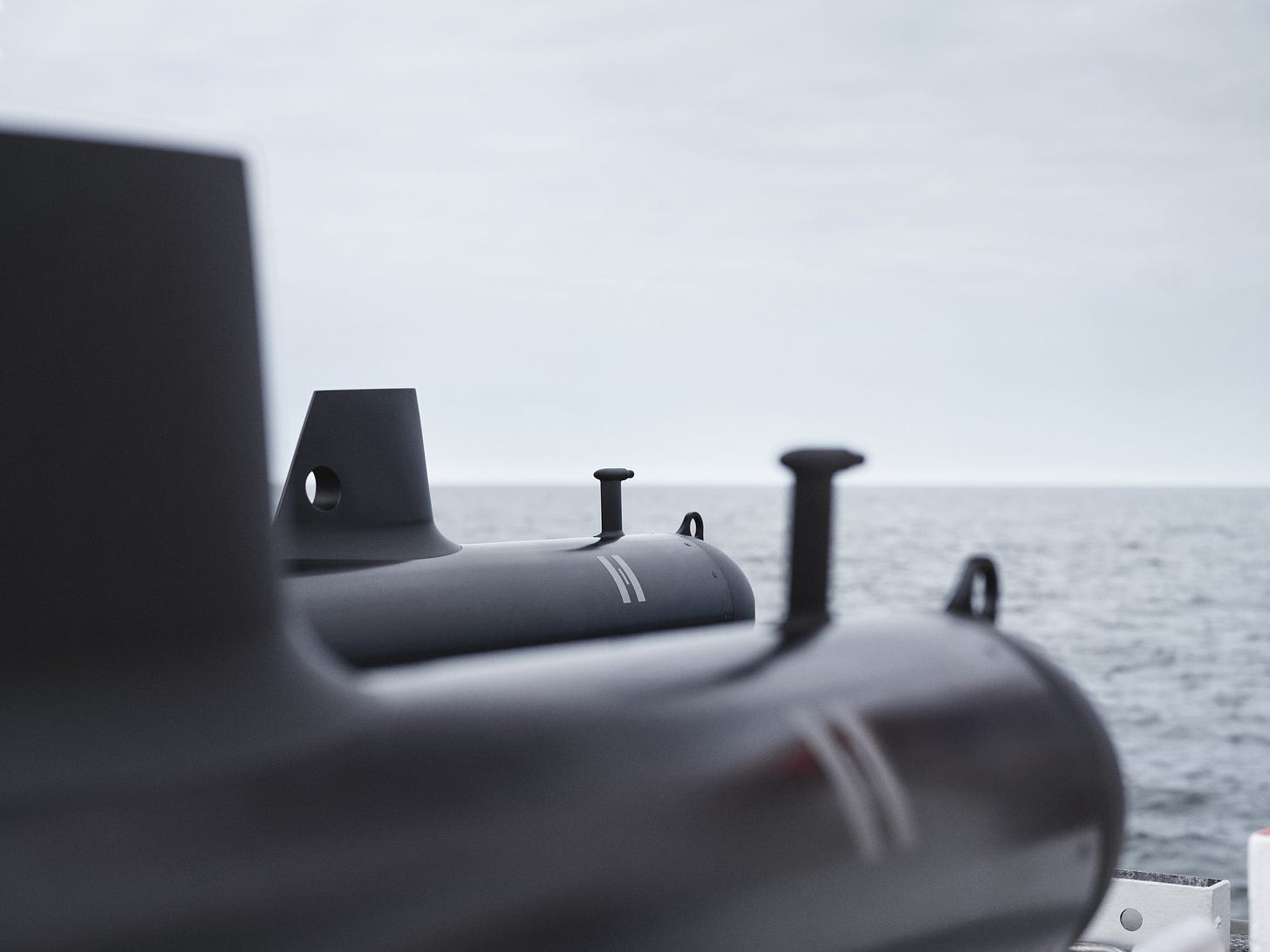Helsing opens its first UK 'Resilience Factory' to build maritime tech
After announcing a £350M commitment to the country a year ago, the German company opened its first manufacturing facility in Plymouth
German startup Helsing’s UK ambitions are taking on some physical form. The company today opened its “Resilience Factory” — its first manufacturing facility in the UK — on the outskirts of Plymouth. It will use the building to develop and manufacture the SG-1 Fathom, an autonomous underwater glider destined for naval forces, which will use the model in mass deployments to detect adversaries’ submarine activity.
UK Defence Secretary John Healey, who officially opened Helsing’s factory, today said that the gliders would be tested in Scotland as part of the UK government’s procurement process.
The opening today was a milestone in how the UK military is being rebuilt, with help from abroad but on UK ground: it was a year ago that Helsing committed to investing £350 million into its UK business, and four months ago that it announced that Plymouth (a major maritime centre) would be the home of the new factory. Alongside the news of Helsing’s factory, the UK government said it would designate 13 new sites as “factories of the future” for munitions and energetics employing 1,000 people.
Helsing’s Plymouth factory will initially employ 50 people — 30 already in place, and the company currently recruiting another 20 — with an aim of doubling that next year.
The 18,000 square-feet factory, as it looks right now weeks into its life, is a hangar-like space, formerly occupied by the Land Registry, and now fully given over to Helsing and its marine mission.
Developed with help from Isembard, outside it is unmarked and inconspicuous, and inside it is cavernous and bright white, with a container that serves as a meeting and demonstration room and an interior wall with a few messaged reminders of what is going on: a massive branded H, a giant Union Jack, and very a hard-to-miss “protecting our democracy” sign.
There’s no mention of AI, but AI is at the heart of it for Helsing: the gliders are powered by Helsing’s Lura software — which uses AI to detect sonar and other sounds in the water and provides some guidance around what they might be, at its best beyond what a human might be able to detect or understand. Both the glider and its software were co-developed by Blue Ocean, the autonomous maritime startup that Helsing acquired in October for an undisclosed sum and has now folded into the Plymouth operation.
Everyone’s swarming on drones, here’s a glider tripwire
Helsing — which has raised more than $1 billion, including a €600 million Series D that valued it at €12 billion — has a prime opportunity in maritime.
To date, the company primarily has been synonymous with its work in drones. However, that has been a crowded and very fragmented market overall.
Helsing is reportedly in line to be one of the big winners in a €900 million German defence contract, although this has yet to be confirmed. It’s also seeing its drones get deployed in tests in the UK among other activities, but with the procurement endpoint for that work not yet in sight.
And perhaps most importantly, Helsing is one of the international startups seeing its drones get actively deployed by Ukrainian units fighting against Russia — with those deployments now seen as an important benchmark of a drone company’s quality. But the reality of the situation is far from winner takes all: there are hundreds of companies making military drones — including many built in Ukraine by Ukrainians themselves. And the Ukraine military has an estimated 800,000 personnel, with hundreds of brigades and hundreds of units under them, with each one choosing what to use on the frontlines.
Maritime is, by comparison, a slightly less oversubscribed market. There are still major players in it, including Kraken and Anduril, but with the vastness of the ocean holding promise and threat, there is a lot more to understand and do in the water. And it too has a hook that is not unlike the mass deployment of drones in swarms: the aim is to mass deploy gliders as well, Helsing’s general manager of maritime Amelia Gould said today. These, she said, could be arranged in long rows as “tripwires” to track and help stop adversaries from navigating to where they should not be.
Maritime is a focus that is very critical, especially to an island like the UK. The government has already identified subsea cables as especially vulnerable to malicious activity, and just earlier today Secretary Healey delivered a speech about how the infamous Russian spy ship, the Yantar, has re-entered UK waters off the coast of Scotland.


